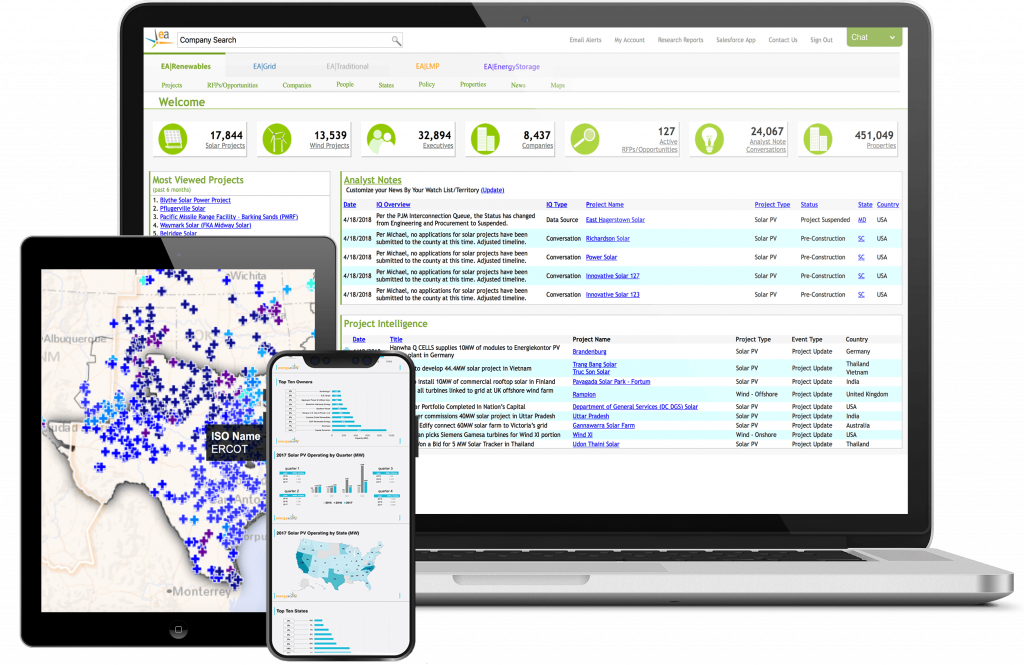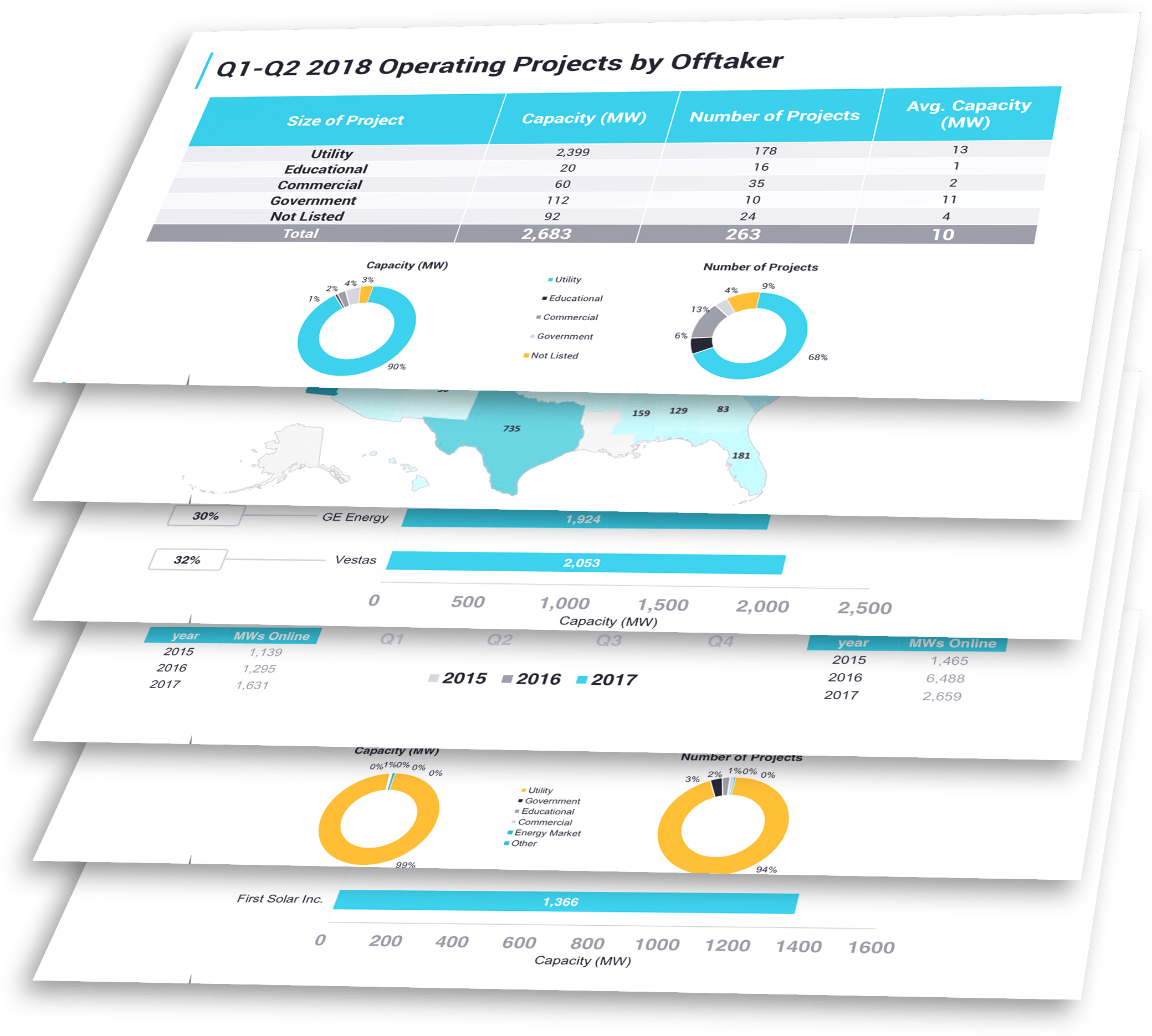
Are you familiar with integrated resource plans (IRPs)? Take a look at this primer on IRPs and see why you should be aware of them.
What is an integrated resource plan?
An integrated resource plan is a roadmap that large utilities use to plan out generational acquisitions over five, 10, or 20 years (or more). Many utilities use integrated resource plans for coal, natural gas, and smart grid energy. You can see a sample IRP here.
IRPs examine foreseeable future resources with regard to transmission lines, substations, power plants, end users, and the utilities and operators responsible for taking care of the transmission and distribution of electricity. Their ultimate purpose is to answer one question: How, as a utility, do we plan to meet future electricity needs? The IRP outlines the necessary actions to enable the utility to continue providing the public with electricity.
The IRP also addresses contributing factors that impact electricity supply and delivery, ranging from government regulations and expectations at both federal and state levels, to physical assets such as transmission lines or coal plants, to customer demand and other drivers. Essentially, an IRP states: “We have these resources and this problem. This is how we will use the first to solve the second.”
Creating An Integrated Resource Plan
Utilities consider many criteria when creating the IRP. Common questions include:
- Will the customer base grow?
- What’s the demand?
- Do we have enough generation capability?
- What will we do in case of emergency, if a plant goes down, etc.?
Utilities invest a significant amount of time in putting integrated resource plans together. Depending on the state, they may create IRPs every other year, yearly, biannually, or even more frequently. Because of the research that goes into the energy planning process, IRPs are massive documents—often hundreds of pages—and detail how utilities made their assumptions.
Why are integrated resource plans important?
IRPs are important for three reasons:
1. Utilities are making huge, multimillion-dollar investments in energy. They want to—and must—do their due diligence to ensure that their investments make sense and will be profitable. An integrated resource plan helps “prove” the value of an investment not only to the utility but also local and state governments, private backers, and the public.
2. An integrated resource plan provides transparency to consumers. It shows if a company is investing in green technology, fossil fuels, etc., and gives the public a way to comment on the strategy.
3. For interested vendors and companies, an integrated resource plan is an excellent way to identify relevant partnership opportunities. When an IRP is published, companies can review it to see what potential projects will be coming their way, identify projects they might like to become involved with, and more.
An Easier Way To Sift Through Integrated Resource Plans
The trouble with integrated resource plans for companies who want to work alongside utilities to develop renewable energy projects is that IRPs are simply massive. They are filled with excellent information but are time-consuming to wade through. If your company wants to review multiple IRPs—and you likely will—it will take you a long time to do it.
That’s where the Energy Acuity Renewables Database comes in.
Instead of wasting countless hours searching manually through integrated resource plans one by one, our powerhouse database lets you review and filter through IRPs easily.
Our search function helps you refine your search—for instance, if you’re interested only in a specific technology like wind power—and then compare several IRPs with your keywords so you can, at a glance, see which may be most promising for your company.
Imagine spending a fraction of the time and still multiplying your project leads. That’s exactly what the Energy Acuity database helps you do—which, ultimately, means better-qualified opportunities for your company.
A Real-Life Scenario
In late April 2017, we reviewed Pacificorp’s 2017 IRP and pulled the following information:
“PacifiCorp will issue a wind resource request for proposals (RFP) for at least 1,100 MW of Wyoming wind resources that will qualify for federal wind production tax credits and achieve commercial operation by December 31, 2020. PacifiCorp plans to issue the RFP in August 2017 and have bids due by October 2017.”
Then, on May 29, 2017, we pulled in the “2017R Wind RFP” issued by PacifiCorp, the 1.2 GW bid mentioned in the IRP.
This went directly into our database for parties interested in wind power opportunities—giving them a head-start by several months on preparing RFPs for PacifiCorp. Without Energy Acuity, you can bet some companies wouldn’t have been able to identify this opportunity early enough on their own—making them miss out on a potentially profitable business win.
Try Putting Our Database To Work For You
To learn more about potential projects through IRPs, check out the Energy Acuity Renewables Database.
Source: Energy Acuity
Need Detailed Renewable Energy Intelligence and Analysis? Request a Free Demo of the Energy Acuity Platform Today!

Energy Acuity (EA) is the leading provider of power generation and power delivery market intelligence. EA’s unique approach merges primary research, public resource aggregation, web monitoring and expert analysis that is delivered through a simple, dynamic online platform. This allows our clients to focus on actionable information and win business over the competition.

